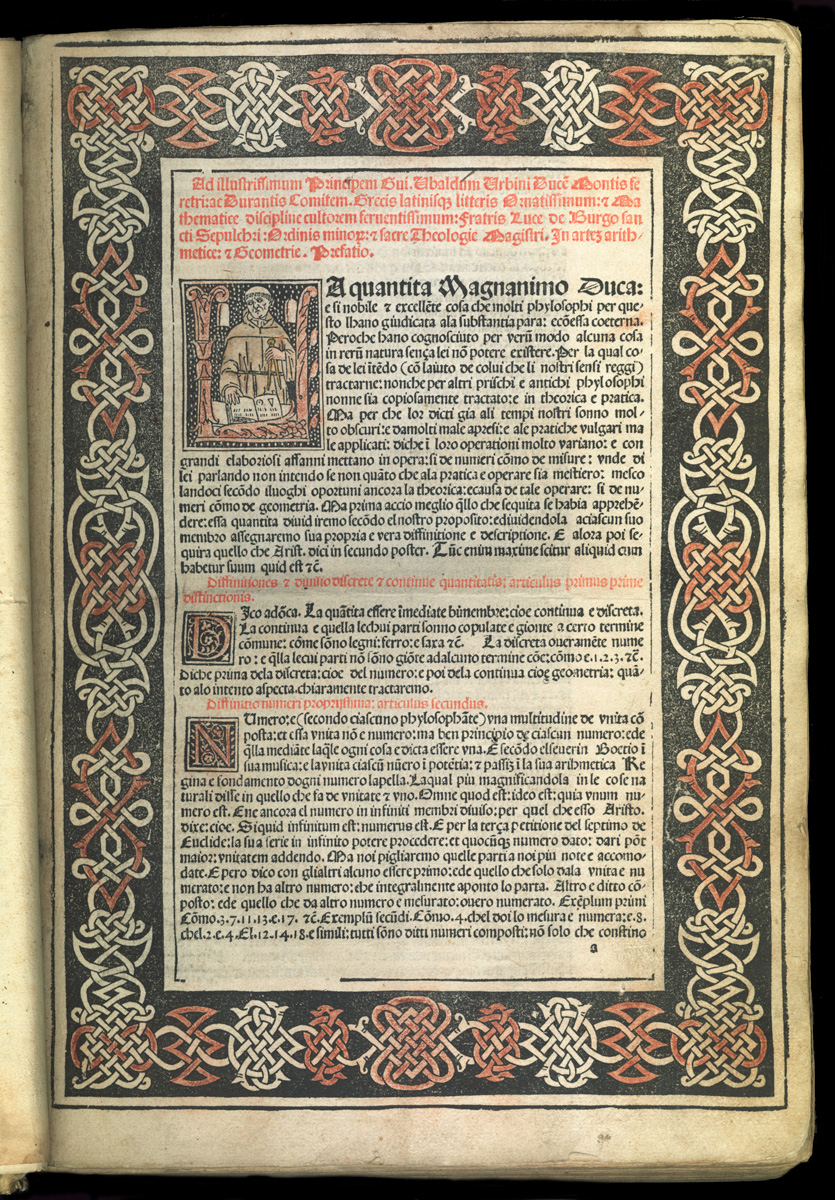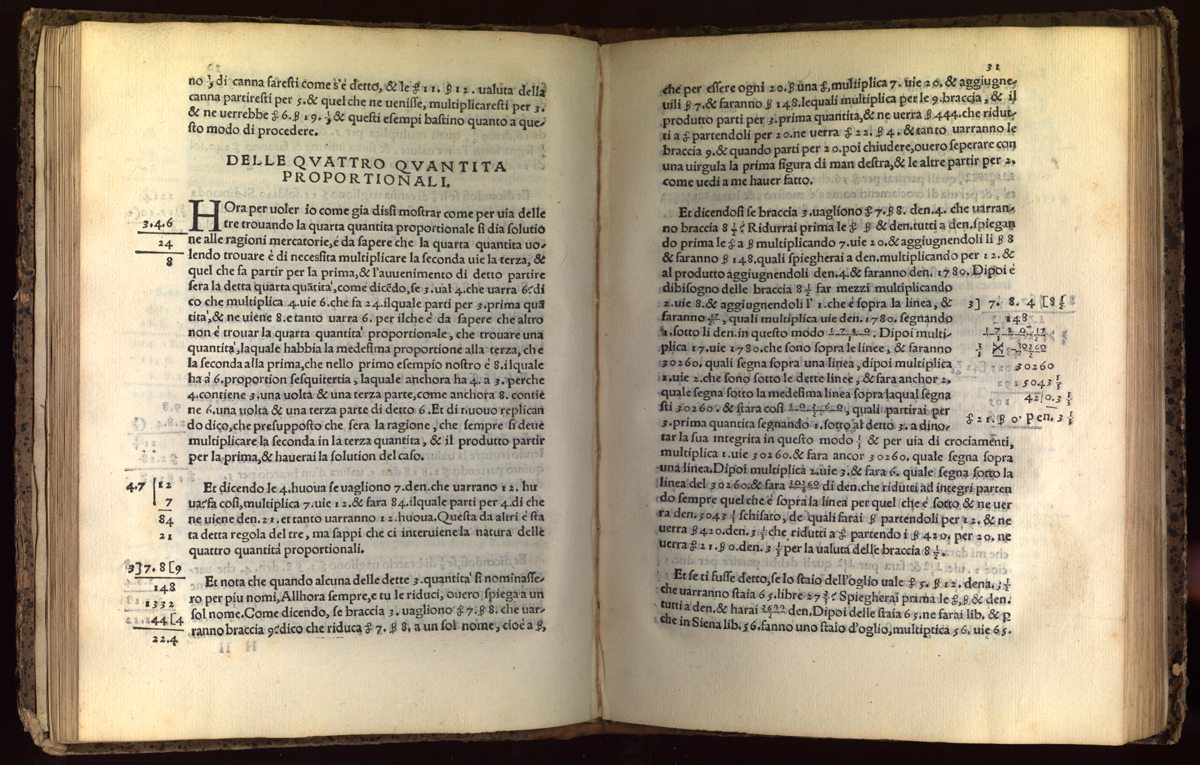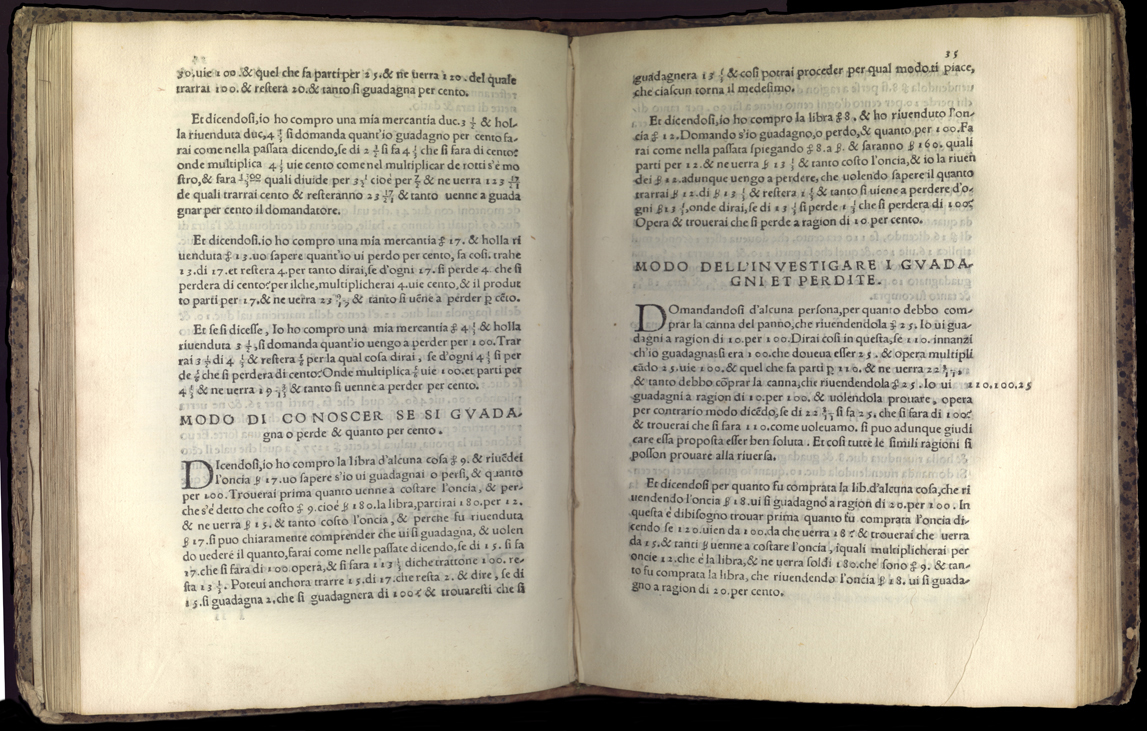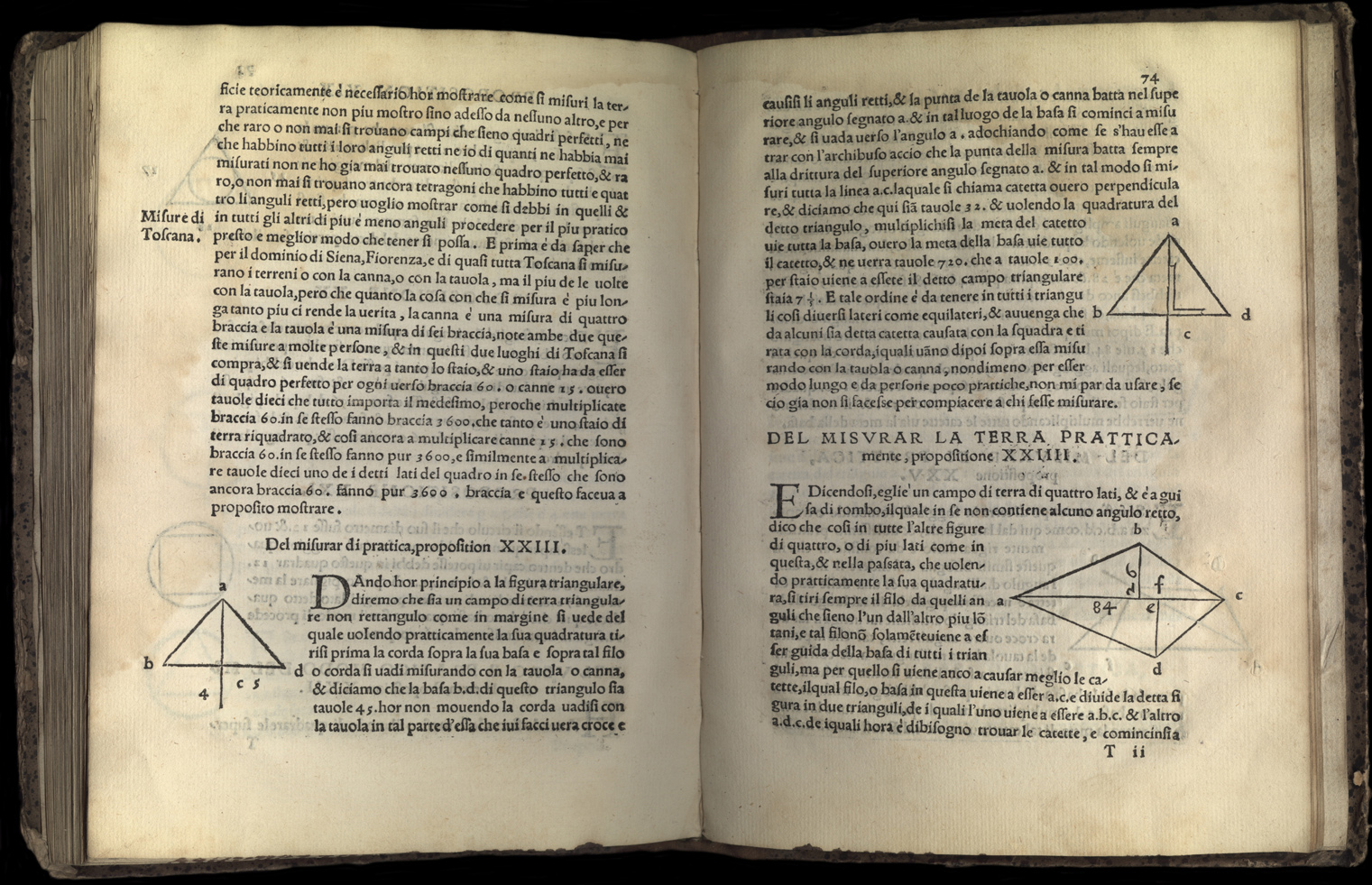6.05 Math for the Future

Historians have made much of the sophistication of Pacioli's 600-page treatise, of his early, thoroughgoing utilization of Hindu-Arabic numerals, and of his numerous forms of visualizing mathematical functions. His Summa de arithmetica was indeed well ahead of its time and remained the single most influential academic arithmetic for many decades. Pacioli's Summa, however, had only two editions in the early modern period, and the book was expensive. It was studied by professional mathematicians. (27) The merchants' sons who made up the largest part of the audience for math textbooks learned their considerable computing skills from much more practical and down-to-earth textbooks. As we have seen, Tagliente's Luminario of 1525 concentrated single-mindedly on bookkeeping, while Borghi's 1484 Libro de abacho attempted to ground merchant practice in a somewhat broader study of arithmetic based on the traditional abaco school course. An early printed imitation of Borghi was Calandri's 1491 De arithmetica, but books of this type continued to be produced in manuscript too, especially at Florence. (28) Books in both these general formats persisted well into the seventeenth century and offered practical courses increasingly divorced from pure arithmetic, to say nothing of higher mathematics.
A turning point came in the fifteen thirties, when the market matured to the degree that various elementary textbooks competed directly with each other. At just this period, moreover, writers for the elementary book market also began to feel the broader impulse to write in standard Tuscan. (29) The elaborate introduction to Giovanni Sfortunati's 1534 New Beacon, a Book of Arithmetic pointed to these new linguistic and market conditions. Sfortunati (b. ca. 1500) introduced himself as a Sienese schoolmaster who had taught arithmetic all over Italy and Sicily. He was a native speaker of Tuscan, then, but one with broad experience of other Italian students. This self-advertisement quickly turned into a claim that he was uniquely qualified to review the older arithmetic books on the market by way of recommending his own. He praised Luca Pacioli's Summa but noted that it contained too much that was not useful for merchants. Similarly Filippo Calandri's book was very learned but did not explain elementary notions well enough to be truly useful for beginners. Sfortunati then turned to Borghi's Libro de abacho. Fifty years old and well established in the market, Borghi's manual was the principal competition for any new elementary arithmetic book in 1534. Sfortunati claimed to have read it many times, implying perhaps that he had been constrained to teach from it. He rejected it because it was written in rough Venetian dialect and described Venetian business practices that were of little use to Tuscans or other Italians. (30) Despite his claims, however, Sfortunati's arithmetic book was also highly traditional. There was little to differentiate it from Borghi's treatment except his good Tuscan. His New Beacon was just old-fashioned abaco with new advertising.

Pietro Cataneo (d. ca. 1569) presented a more progressive approach in his 1546 Practice of the Two Basic Mathematics. Cataneo went on to be an architectural writer but this was his first work to see print, apparently self-published in three editions. (31) Cataneo arranged his entire course to address the commercial prejudices of the market. He took some forty eight pages for an outline of essential arithmetic notions and then went on to discuss merchant situations almost exclusively. These occupy an additional hundred pages.

The transition between the two parts came in the form of a long chapter on proportional computation, in which Cataneo invited the reader to think of mathematics as a better form of merchant common sense. He had his students start from real-life situations, but they were to abstract each problem into a quasi-algebraic proposition with a single unknown term clearly situated in a mathematical formula susceptible to computation. This sort of reasoning, he said, is essential to finding "a solution to commercial accounts" (solutione alle ragioni mercatorie).

He proceeded to demonstrate the method with problems of increasing complexity concerning profit and loss, business partnerships, foreign exchange, barter, simple and compound interest, and rent contracts. (32) Before turning to geometry, Cataneo gave a substantial section of problems to be solved by estimation, the so-called "rule of Cathay, or false positioning." (33) Among the practical problems in this section he also included a few mathematical amusements.

The book concluded with geometry problems, all carefully attached to real-life situations like dividing parcels of land or computing weights and measures. With Cataneo we have arrived at a mathematics textbook that looks decidedly modern. It exercised the student thoroughly in theory but sold the idea of such instruction on the basis of its utility in the real world. Books on this model would serve math teachers and their target audience -- parents, of course -- well into the twentieth century. (34)
NOTES
- Open Bibliography
- (27 Antinori 1994, 26-45; Macve 1996, 5-19; Crosby 1997, 210-222; Ciocci 2003, 35-37, 236-237. On ther persistence of Latin as the language of university-level mathematics instruction, Marazzini 1993, 19-20.
- (28) Others, like that of Francesco Galigai (d. 1537), also saw multiple editions in the sixteenth century; see Goldthwaite 1972, 430-432; Ulivi 1998.
- (29) On the general phenomenon of sixteenth-century Tuscanizing in technical literature of all sorts, Trovato 1994, 37-44.
- (30) Sfortunati 1545, 3r: lingua Veneta et ruda, et con propositioni piu al veneto che al Toscano costume appartenenti.
- (31) Smith 1908, 242-245.
- (32) For this approach, using arithmetic notions to solve algebraic problems before the invention of proper algebraic notation, see Radford 1997, 30-33; Simi 2003, 184-191.
- (33) Cataneo 1559, 55v: Regola del cataino overo false positioni; Grendler 1989, 317-318; Simi 2003, 173-178.
- (34) On the market, Simi 2003, 189-191.